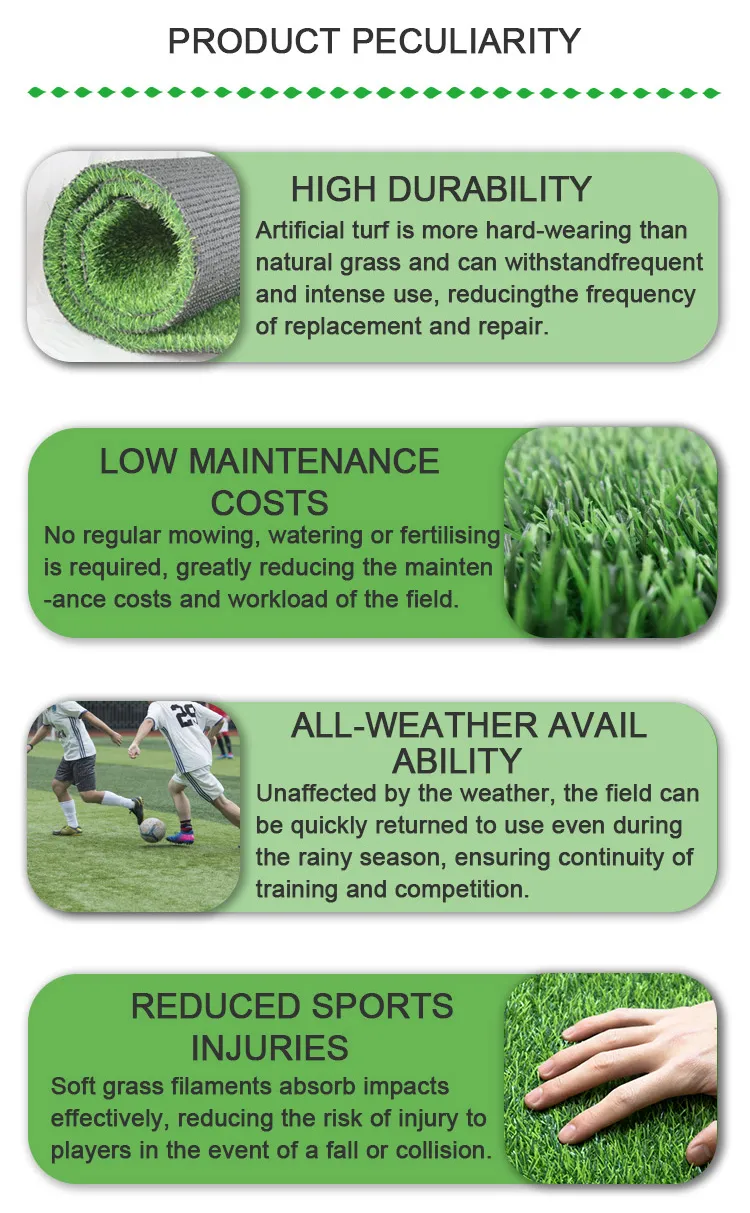
- Afrikaans
- Arabic
- Belarusian
- Bengali
- Czech
- Danish
- Dutch
- English
- Esperanto
- Estonian
- Finnish
- French
- German
- Greek
- Hindi
- Hungarian
- Icelandic
- Indonesian
- irish
- Italian
- Japanese
- kazakh
- Rwandese
- Korean
- Kyrgyz
- Lao
- Latin
- Latvian
- Malay
- Mongolian
- Myanmar
- Norwegian
- Persian
- Polish
- Portuguese
- Romanian
- Russian
- Serbian
- Spanish
- Swedish
- Tagalog
- Tajik
- Thai
- Turkish
- Turkmen
- Ukrainian
- Urdu
- Uighur
- Uzbek
- Vietnamese
football turf cost
Nov . 05, 2024 06:40 Back to list
Understanding the Costs of Football Turf A Comprehensive Guide
Football is one of the most popular sports globally, and with its growing popularity, the demand for high-quality playing surfaces has increased significantly. As a result, many clubs, schools, and recreational centers are making the shift from natural grass fields to synthetic turf. This transition is often driven by various factors, including durability, maintenance, and aesthetics. However, one of the most pressing concerns that stakeholders encounter is the cost associated with installing and maintaining football turf. In this article, we will explore the various costs associated with football turf, providing an understanding that can help in making informed decisions.
Initial Installation Costs
The initial installation cost of football turf can vary widely based on several factors, including the quality of the turf, the complexity of the installation, and geography. Generally, the cost of synthetic turf ranges from $5 to $20 per square foot. For a standard football field measuring about 57,600 square feet (including end zones), the total installation cost can range from approximately $288,000 to $1,152,000. This price typically includes the turf itself, proper drainage systems, infill material, and labor costs.
Quality is paramount when selecting turf, as higher-quality synthetic options generally provide better performance, longevity, and a more realistic playing experience. Thus, investing in premium synthetic turf might entail higher upfront costs but can yield significant savings in the long run through durability and reduced maintenance needs.
Long-Term Maintenance Costs
One of the critical advantages of synthetic turf over natural grass is the reduced maintenance costs. While natural grass requires regular mowing, fertilization, watering, and pest control, synthetic turf demands far less attention. Annual maintenance costs for synthetic turf typically range from $15,000 to $25,000. This usually covers services like brushing, infill replacement, and periodic inspections to ensure the surface remains safe and playable.
In contrast, ongoing maintenance for natural grass fields can exceed $50,000 per year, making turf a more economically viable option for many organizations. Additionally, synthetic turf allows for more consistent playability, regardless of weather conditions, which is not always the case with natural grass.
football turf cost

Replacement Costs
Though synthetic turf is designed to last, it does have a finite lifespan. High-quality turf can last anywhere from 8 to 15 years, depending on usage, maintenance, and environmental conditions. Near the end of its lifecycle, a football field may require a complete replacement, which can again range between $288,000 and $1,152,000 based on the aforementioned factors.
However, given the long-term savings on maintenance and the ability to use the field more frequently without recovery time—two significant advantages of synthetic turf—the overall cost of ownership can be much lower over time compared to a natural grass field.
Additional Considerations
While upfront and maintenance costs are crucial, other factors should also be considered in the financial equation. For instance, organizations should consider the potential for increased revenue through additional play opportunities. Fields that withstand heavy use can attract more events, whether league games, tournaments, or community events, contributing positively to revenue generation.
Moreover, the perception and satisfaction of players, coaches, and fans can also influence considerations for installation. A well-maintained synthetic field can enhance the quality of play and overall experience, potentially increasing engagement and support for the team or program.
Conclusion
In conclusion, the costs associated with football turf installation and maintenance are multifaceted and require careful consideration. While the initial investment can be significant, the long-term benefits, including reduced maintenance, durability, and consistently playable conditions, make synthetic turf an attractive option for many football fields. As demand for quality playing surfaces continues to rise, understanding these costs will be essential for stakeholders at all levels, ensuring informed decisions that lead to successful athletic programs.
-
The Benefits of Artificial Turf for Indoors
NewsJul.15,2025
-
How Artificial Grass Suppliers Ensure Quality Products
NewsJul.15,2025
-
Artificial Grass and Pets: A Space for Relaxation
NewsJul.08,2025
-
Balcony & Outdoor Decoration with Artificial Grass
NewsJul.08,2025
-
Best Indoor Artificial Grass for Home
NewsJul.07,2025
-
Best Pet Turf for Dogs: Safe & Durable Artificial Grass Options
NewsJul.07,2025
Products categories









